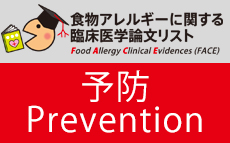Temporal trends and racial/ethnic disparity in self-reported pediatric food allergy in the United States.
更新日:2016年10月21日
| Author: | Keet CA, Savage JH, Seopaul S, Peng RD, Wood RA, Matsui EC. |
|---|---|
| Title: | Temporal trends and racial/ethnic disparity in self-reported pediatric food allergy in the United States. |
| Citation: | Annals of allergy, asthma and immunology 2014 Mar;112(3):222-229.e3 |
| URL: | https://pubmed.ncbi.nlm.nih.gov/24428971/ |
| Abstract: | BACKGROUND: The prevalence of food allergy is thought to be increasing, but data from the United States have not been systematically synthesized. OBJECTIVE: To summarize the data on prevalence of food allergy in the US pediatric population and to estimate the effects of time, race/ethnicity, and method of assessing food allergy on the estimated prevalence. METHODS: Embase, MEDLINE, bibliographies of identified reports, and data from publically available data sets were searched. Studies were limited to those in English with data from the general pediatric US population. Study synthesis was performed by meta-analysis and meta-regression to estimate the effect of study- and participant-level covariates. Meta-regression was limited to nationally representative surveys conducted by the Centers for Disease Control and Prevention. RESULTS: A total of 10,090 publications were identified, from which 27 different survey administrations, representing 452,237 children, were identified, covering the period of 1988 to 2011. Because of heterogeneity among surveys in the estimated food allergy prevalence, a summary estimate of food allergy prevalence was not possible. Meta-regression was performed using 20 of these surveys.Temporal trends were pronounced, with an estimated increased prevalence of self-reported food allergy of 1.2 percentage points per decade (95% confidence interval [CI], 0.7-1.6). The increase per decade varied by race/ethnicity: 2.1% among non-Hispanic blacks (95% CI, 1.5%-2.7%), 1.2% among Hispanics (95% CI, 0.7%-1.7%), and 1.0% among non-Hispanic whites (95% CI, 0.4%-1.6%). CONCLUSION: Self-report of food allergy among US children has sharply increased in the past 2 decades. The increase has been greatest among non-Hispanic black children, a disparity that needs to be investigated. |
| 邦文タイトル: | 準備中 |
| 一般向け要約 | 準備中 |
| 専門医コメント | 準備中 |


